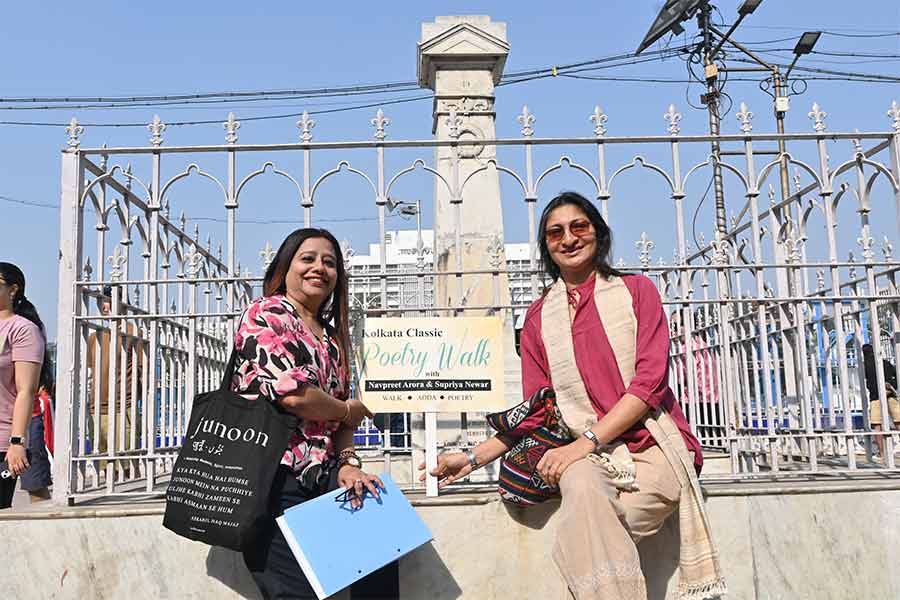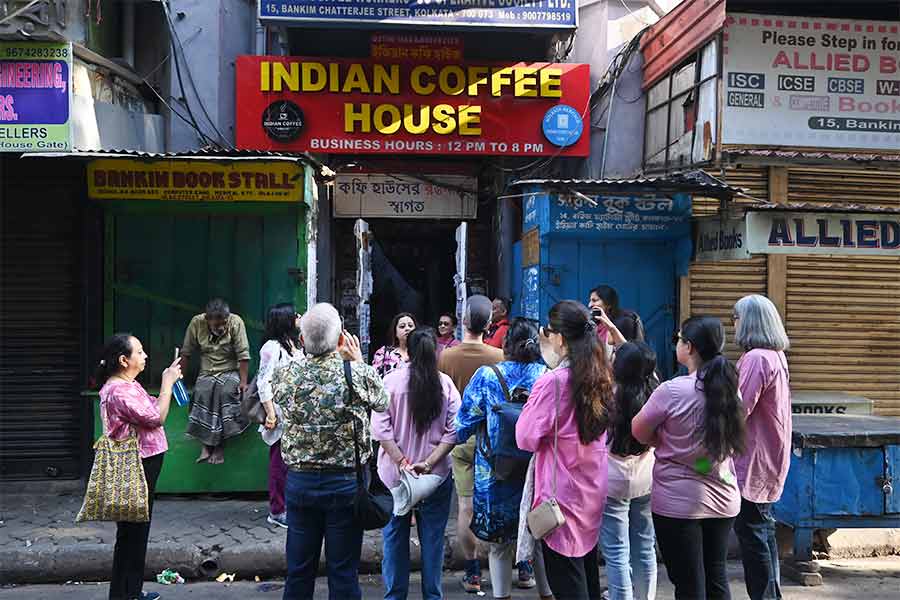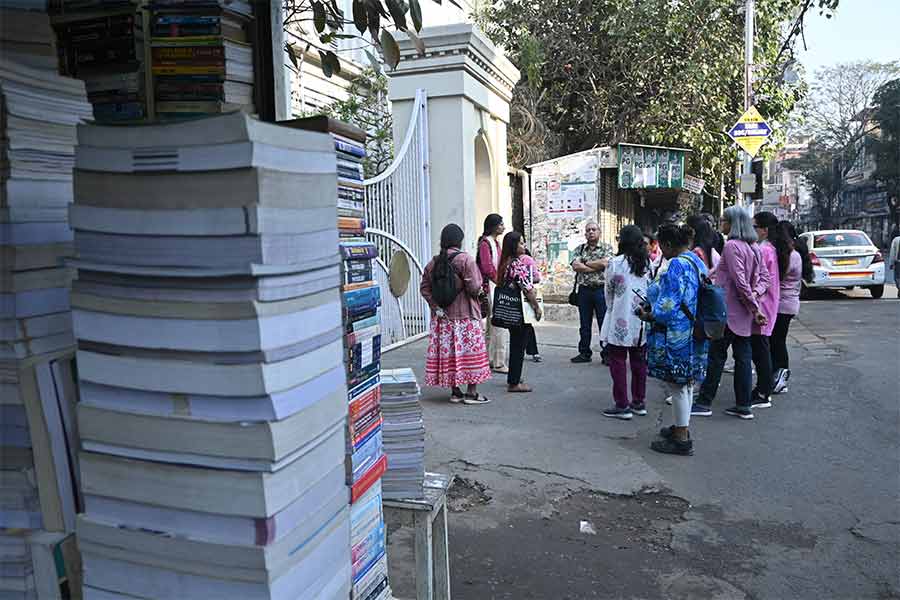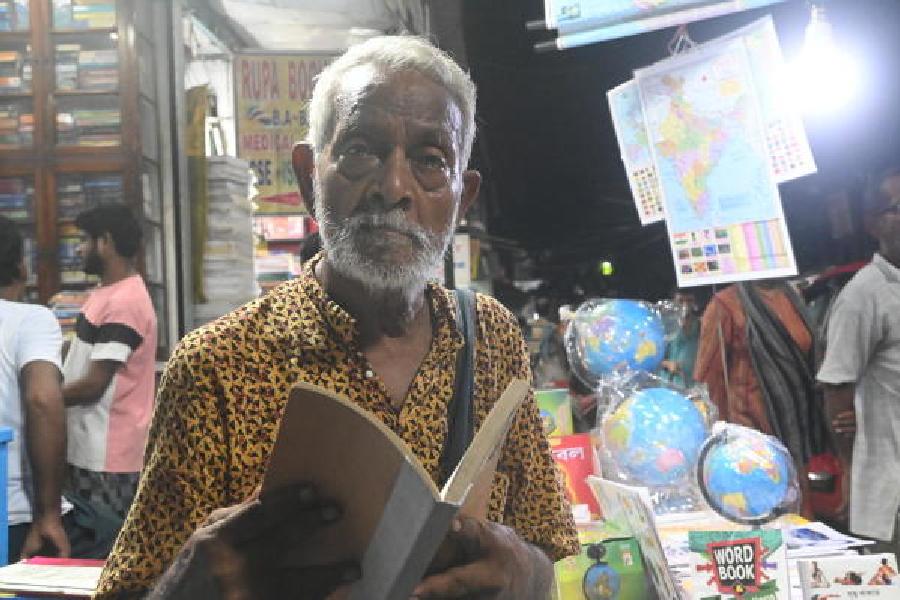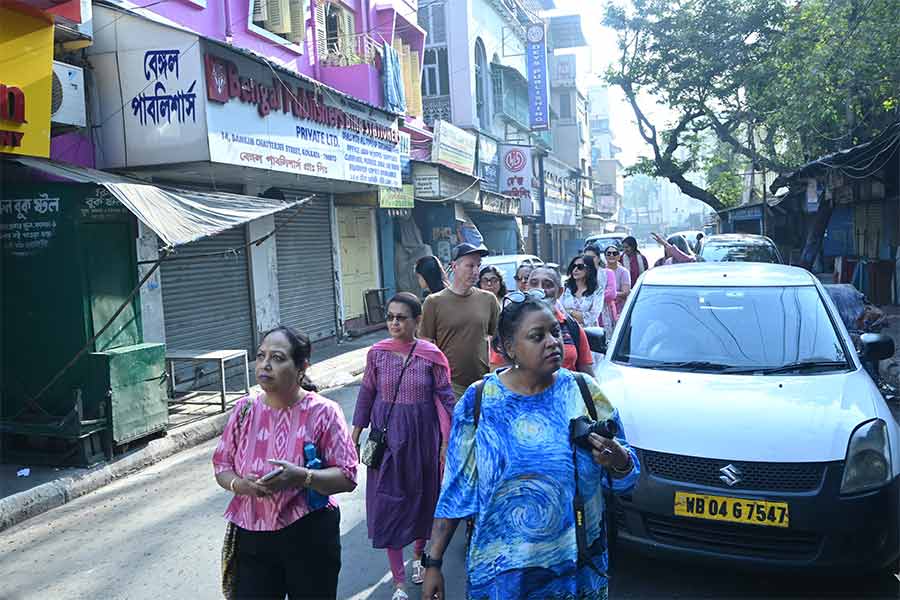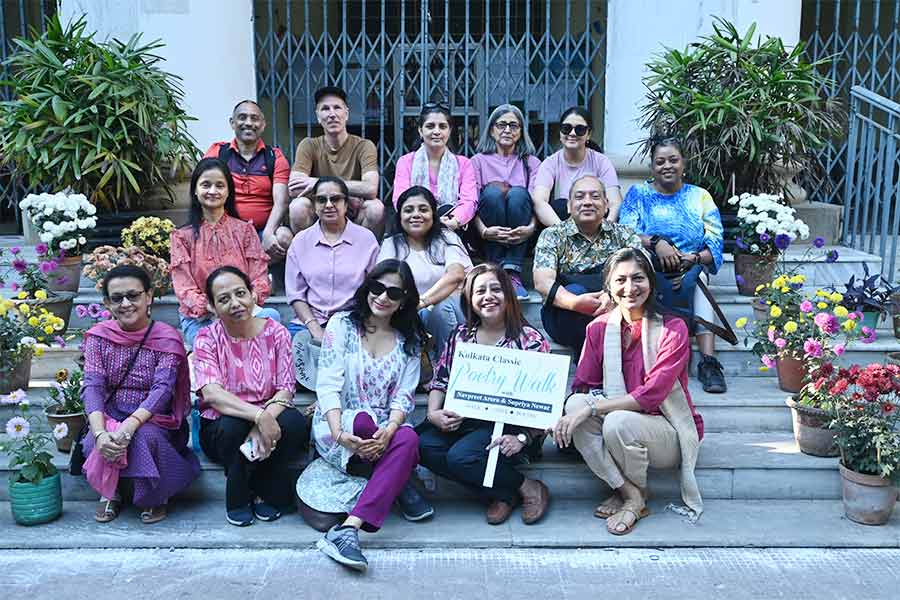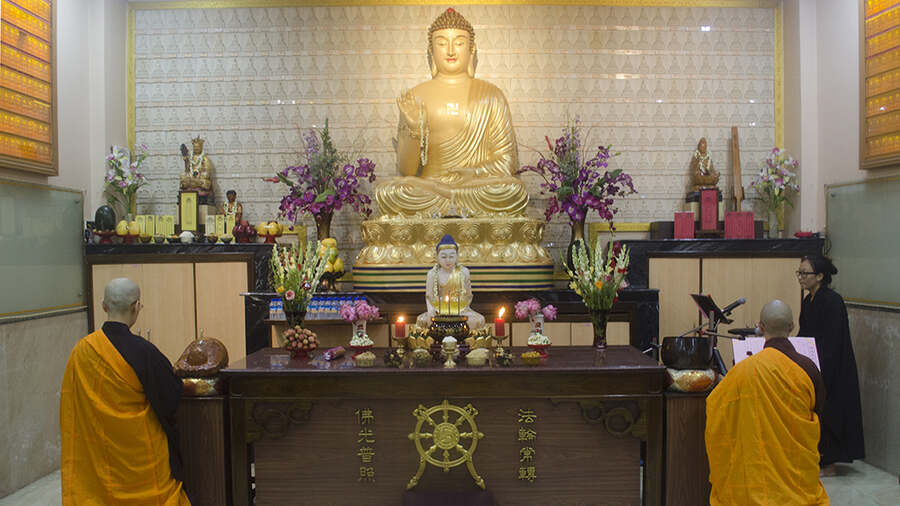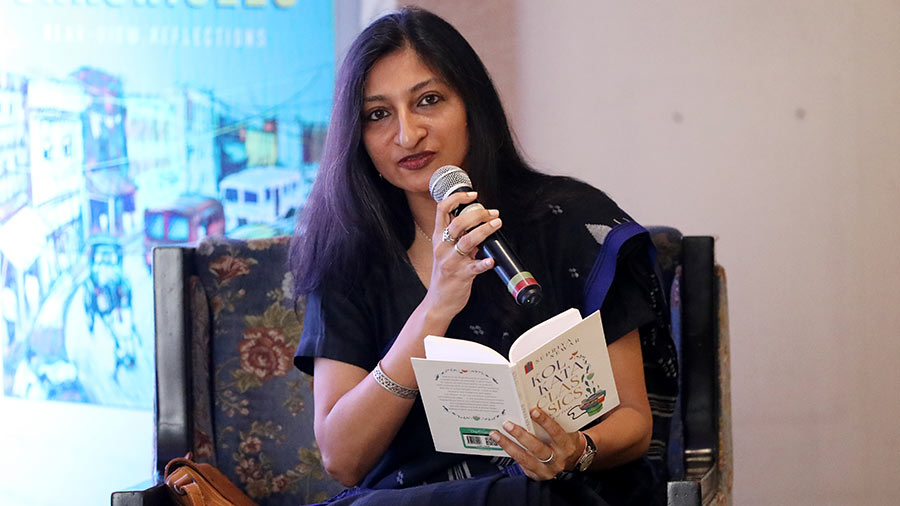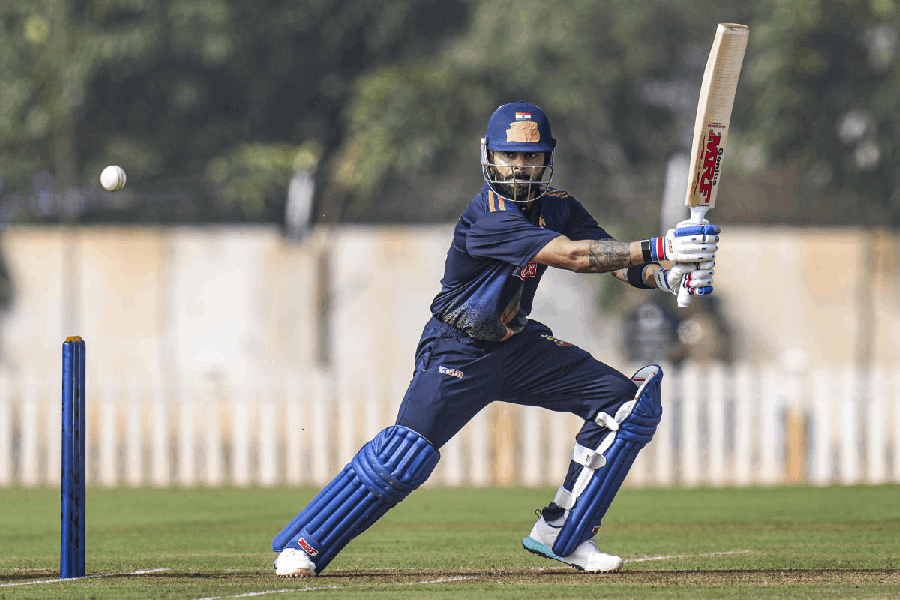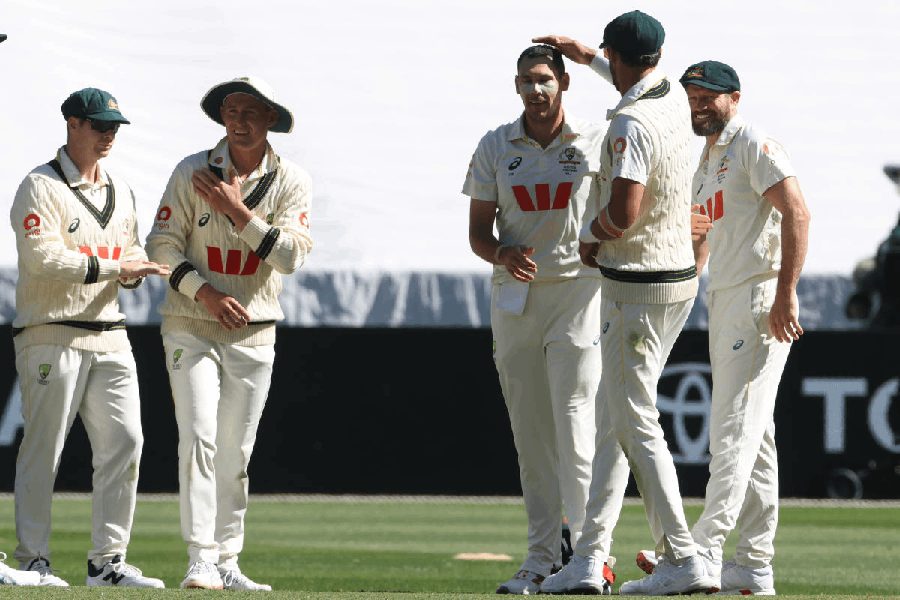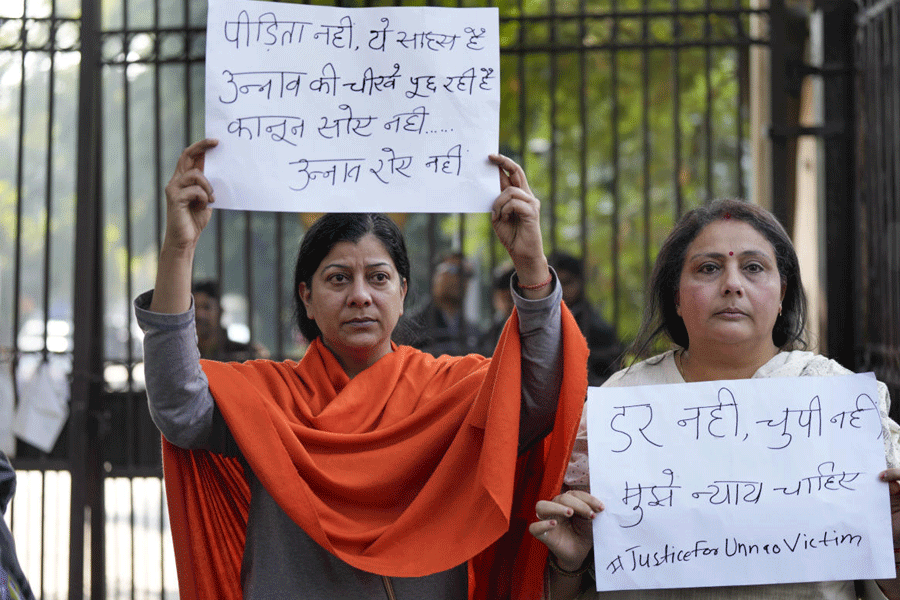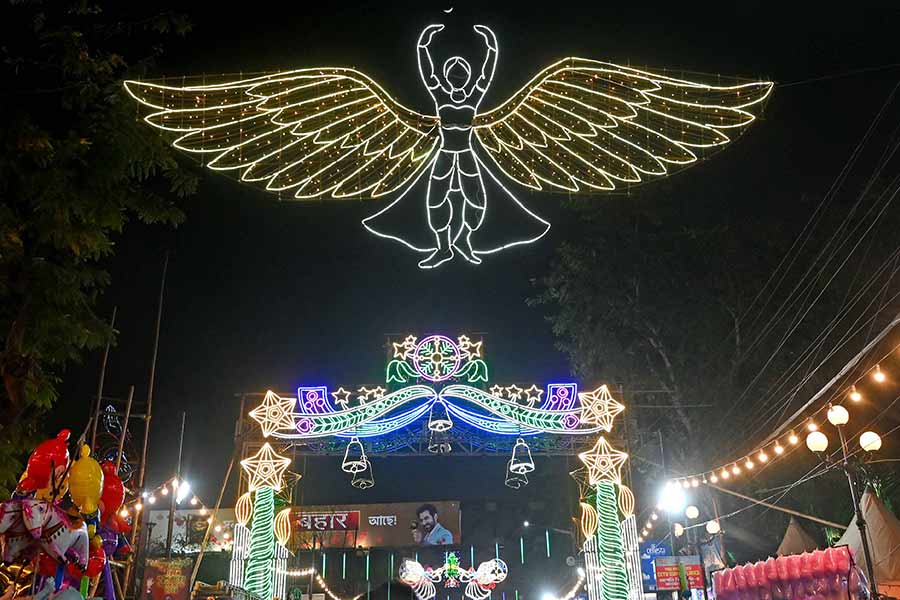In a city where history and culture breathe through every street, poetry finds a home in its most unexpected corners. Kolkata, the eternal muse of poets, artists and revolutionaries, has long been a city of words — spoken, written and sung. And nowhere is this more evident than in Boipara, the famed book district around College Street in central Kolkata, where the scent of old books mingles with the whispers of literary ghosts. It was here, on the morning of February 15, that heritage enthusiast Navpreet Arora and poet Supriya Newar led a group of eager participants on a ‘Poetry Walk’ that intertwined history, nostalgia and verse into a singularly immersive experience.
A city of firsts and a street of ideas
The walk began at 8am near the grand white steps of Sanskrit College, where Navpreet set the tone for the morning by recounting how College Street became the epicentre of intellectual ferment in the city. It was here that the Bengali youth first encountered western ideas, engaged with radical philosophies and debated fiercely in coffee houses and bookshops. It was here that books weren’t just sold but devoured, dissected and discussed with a passion that still survives.
From Sanskrit College, the group meandered towards the Indian Coffee House, a place synonymous with adda. Though the cafe was closed at that early hour, the spirit of its past patrons — Satyajit Ray, Amartya Sen and Sunil Gangopadhyay — seemed to linger. A spontaneous chorus of Manna Dey’s classic Coffee House er Shei Adda Ta broke out among the group, proving that some traditions refuse to fade.
As they walked, Supriya delightedly pointed out a small bookstall named ‘Supriya’, laughing as she claimed it as her personal favorite. Across the road, the Presidency University gates stood solemnly shut, a silent sentinel to decades of intellectual movements. Here, Navpreet gestured towards Chuckervetty’s, one of the oldest bookstores, exclaiming at the quaintly anglicised spelling still frozen in time. Every building, every plaque, every forgotten name carried a fragment of the city’s literary legacy.
At Hare School, the first recital of the day took place (in picture above). Supriya read out her evocative poem, Adda, capturing the essence of Kolkata’s endless love for conversation and camaraderie (all readings on the day were from Supriya’s two books on the city, Kalkatta Chronicles and Kolkata Classics). She followed it up with an English translation of Gulzar’s haunting “Kalkatta”, a poem that echoes the city’s melancholic, yet magical, soul. The juxtaposition of languages — Bengali, Urdu, English — felt like a metaphor for the city itself, layered with histories and voices from different times.
Where words and monuments collide
The walk then led to Calcutta University, where Navpreet’s storytelling took the group back to Bankim Chandra Chattopadhyay’s days as a student, recounting the little-known tale of how he failed a language test, only to be promoted with grace marks — an irony, considering his later eminence as the writer of Vande Mataram.
At College Square, with its serene waters reflecting the morning light, Supriya recited her poem, Madhyamik, drawing smiles and knowing nods from those who had once braved the nerve-wracking secondary school exams it described. The group paused at David Hare’s tomb, now locked away behind gates, a stark contrast to the open space it once was.
“We spent so much time here during our college days — it’s hard to see everything getting closed off,” sighed Supriya, echoing a sentiment many felt. Navpreet added a layer of forgotten history, recounting how authorities once attempted to remove the tomb, citing concerns over the Goldighi water, only to be met with student resistance that saved it from demolition.
A little ahead stood the 49th Bengali Regiment Memorial, bearing the names of soldiers who had fought and fallen. Here, the group paused in silent tribute, contemplating the stories the city had witnessed, the voices lost to time, and the verses yet to be written.
‘This is the most secular street in Kolkata’
At Bankim Chatterjee Street, Navpreet observed: “This is the most secular street in Kolkata — everything coexists here.” Indeed, along this single stretch lay a mosque — the Mahabodhi Society, founded by Sri Lankan Buddhist leader Angarika Dharmapala in 1892 — as well as the Bengal Theosophical Society, and the Baptist Mission, a striking Gothic structure designed to appear taller as it narrows upward.
Against this backdrop, Supriya performed her final reading — her poem, Pheriwala, a tribute to the rhythm of the city’s street vendors, recited in front of a van adorned with a photograph of Kishore Kumar. “There is poetry residing in every nook and corner of this city. In this day of the internet and Wikipedia, how do we add value to a heritage walk? There is so much material around College Street, but how do we make it an experience that stays with people?” asked Supriya.
The walk ended, as all great Kolkata mornings must, at Putiram’s, where the group sat down to steaming kochuri and chholar dal. Between bites of breakfast, Navpreet and Supriya reflected on how the idea of the ‘Poetry Walk’ was born two years ago, during Kolkata’s winter months. “We love this city,” Navpreet said. “And when we talked, the concept of combining poetry with heritage walks just felt natural.”
In that moment — between history and poetry, past and present, steaming kochuri and conversations — it was clear that Kolkata isn’t just a city of poetry. It is poetry itself. And for those willing to listen, every street still has a story to tell.
